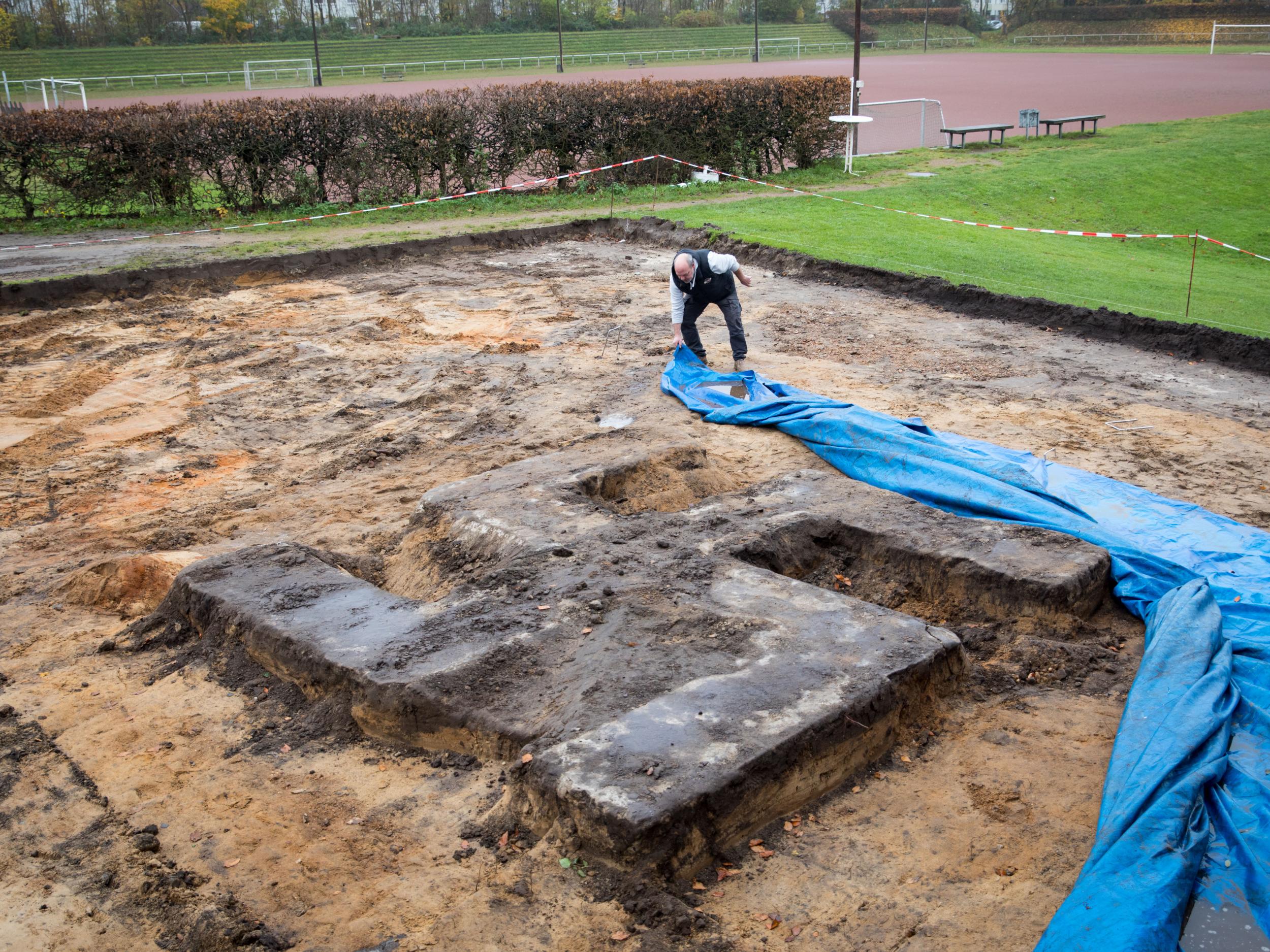Giant concrete swastika unearthed by construction workers in Germany
Monolith is too heavy to be transported away and will be broken up with jackhammers

Your support helps us to tell the story
From reproductive rights to climate change to Big Tech, The Independent is on the ground when the story is developing. Whether it's investigating the financials of Elon Musk's pro-Trump PAC or producing our latest documentary, 'The A Word', which shines a light on the American women fighting for reproductive rights, we know how important it is to parse out the facts from the messaging.
At such a critical moment in US history, we need reporters on the ground. Your donation allows us to keep sending journalists to speak to both sides of the story.
The Independent is trusted by Americans across the entire political spectrum. And unlike many other quality news outlets, we choose not to lock Americans out of our reporting and analysis with paywalls. We believe quality journalism should be available to everyone, paid for by those who can afford it.
Your support makes all the difference.A giant concrete swastika has been unearthed by construction workers in Germany.
The Nazi monolith was found buried beneath a sports field in the northern city of Hamburg.
German news agency dpa said workers were excavating ground to build changing rooms when they discovered the four-by-four metre block.
Members of the sports club at the Hein-Kling stadium in the city's Billstedt district said the swastika served as a foundation for a monument that was torn down decades ago.
City officials say they want the swastika gone as quickly as possible.
But because it is too heavy to be transported away, they are planning to destroy it with jackhammers.
The discovery follows two years after an amateur archaeologist found a collection of gold coins worth around 45,000 euros said to have been buried during the Nazi era or shortly after the Second World War.
Florian Bautsch found 10 coins under a tree near the northern town of Lueneburg and a further 207 were then excavated.
Two aluminium seals featuring swastika crosses, eagles and the words “Reichsbank Berlin 244” – a reference to the Nazi era central bank - were also discovered.
An analysis of the metal suggested they were made some time after 1940.
Subscribe to Independent Premium to bookmark this article
Want to bookmark your favourite articles and stories to read or reference later? Start your Independent Premium subscription today.
Join our commenting forum
Join thought-provoking conversations, follow other Independent readers and see their replies
Comments